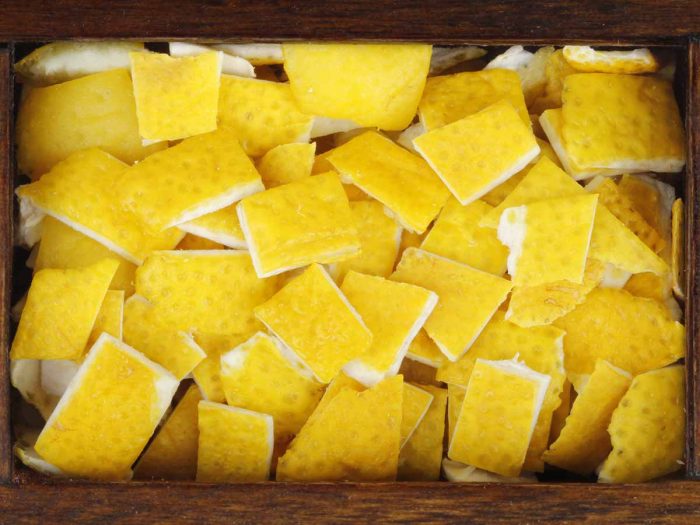Those people who regularly throw away their Lemon rind or Lemon peel should reconsider, given that this part of the fruit is packed with nutrients and has a variety of creative uses in the kitchen.
What is Lemon Rind or Lemon Peel?
The concept of a lemon rind has puzzled many at-home cooks and professional chefs for generations, as it isn’t always clear what part of the fruit is being referred to. There does appear to be some consensus that the lemon rind includes the colorful outer layer of the fruit, as well as a thin layer of white pith beneath it. Lemon rind is called for in many different recipes, which basically call for strips of the outer layer of the fruit, including some of the firm white pith and the yellow-colored outer layer. [1]
Difference Between Lemon Peel, Zest & Rind
Despite the confusion and overlap of these terms in many recipes, there is a clear separation between the lemon peel, lemon zest, and lemon rind.
Lemon Zest – This is the very outer edge of the lemon peel, comprising only the yellow-colored layer of skin. Lemon zest is commonly called for as a garnish for cocktails or a flavoring agent, but since it cooks up so quickly, it isn’t as commonly required in hot recipes.
Lemon Rind – The rind of the lemon includes the lemon zest, as well as a thin layer of the white pith beneath it. A lemon rind is thicker than the lemon zest. This white pith included in the lemon rind is bitter and has an unpleasant flavor, whereas the zest has the aroma and taste of the inner fruit. [2]

When carefully and lovingly grated onto cakes and pastries, lemon rind provides a freshness to the confectionaries. Photo Credit: Shutterstock
Lemon Peel – This term encompasses the zest, rind, and the rest of the outer shell of the fruit; basically, the peel is everything except for the fruit inside that is traditionally eaten.
Lemon Rind Nutrition
The nutritional profile of the lemon rind includes high levels of potassium and vitamin C, as well as smaller amounts of calcium and a healthy dose of dietary fiber. Granted, to enjoy the health benefits afforded by these nutrients, you would need to eat a rather large portion of lemon rind – far more than is typically called for in a recipe. Most importantly, the lemon rind is a much more concentrated source of limonene and other flavonoids. [3]
Lemon Rind Health Benefits
The health benefits of this rind include its ability to boost skin health, aid in weight loss efforts, and improve bone density, among others.
Skin Care
Limonene is a powerful antioxidant, so along with vitamin C, this rind can give your skin a healthy boost, thanks to its effects on free radicals and oxidative stress, which causes wrinkles, blemishes, and signs of aging. [4]
Reduces Cholesterol
The high fiber content of lemon rind helps to optimize digestion, improve nutrient uptake, prevent overeating, lower cholesterol, and aid in weight loss efforts. [5]
Improves Bone Density
There is a good amount of trace minerals found in the rind of lemons, which can help boost bone density and prevent osteoporosis as you age.
Lemon Rind Uses
There are countless uses for this citrus rind, including as a natural cleaner for your bathroom and tub, a topical application that can help lighten age spots, a hair rinse, a dry-skin treatment, a natural deodorizer for your home or laundry room, an insect repellent for ants, a nail whitener, a sugar scrub for your skin, and even a means to light fires. The active ingredients, powerful aroma, and antibacterial nature make many of these uses possible. Furthermore, lemon rind can be dried or frozen, ground into a powder, or simply sliced up as a flavor additive in soups, stews, curries or salads. [6]
How Do You Grate Lemon Rind?
It is quite easy to grate the rind of a lemon; all you need is a common potato peeler.
- Step 1: Thoroughly wash the lemon and then dry it.
- Step 2: Using a vegetable grater or fruit zester, carefully run it over the surface of the lemon.
- Step 3: You will want to apply some pressure to avoid only removing the zest.
- Step 4: Collect the strips of rind and store them in an airtight container in the refrigerator until you are ready to use them.
